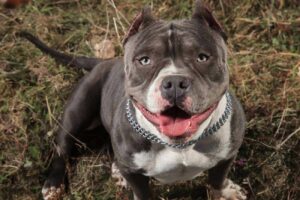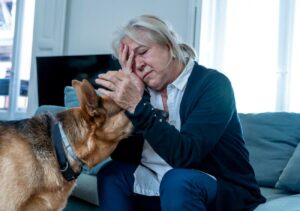Pugs are not conventionally beautiful, but there’s something about their squished, wrinkled faces and dark, beady eyes that makes people fall in love.
In fact, pugs are the 28th most popular out of 196 dog breeds recognized by the American Kennel Club.
But did you know there are at least 9 other dog breeds that look like pugs?
To help you find the perfect match for your family, here is a list of several brachycephalic breeds (dogs with squished-in faces) and other dogs who resemble pugs in some way.
9 Dog Breeds Similar To Pugs
Take Note
Being flat-faced these pug-like breeds do better in cooler temperatures. Heat exhaustion can be fatal for these dogs, so it’s crucial that they're kept in well-ventilated, air-conditioned rooms when living in warmer climates, and that walks or playtime outdoors are very limited when it’s excessively hot.
Also Related: Understanding Brachycephalic Airway Syndrome in Dogs
Boston Terrier
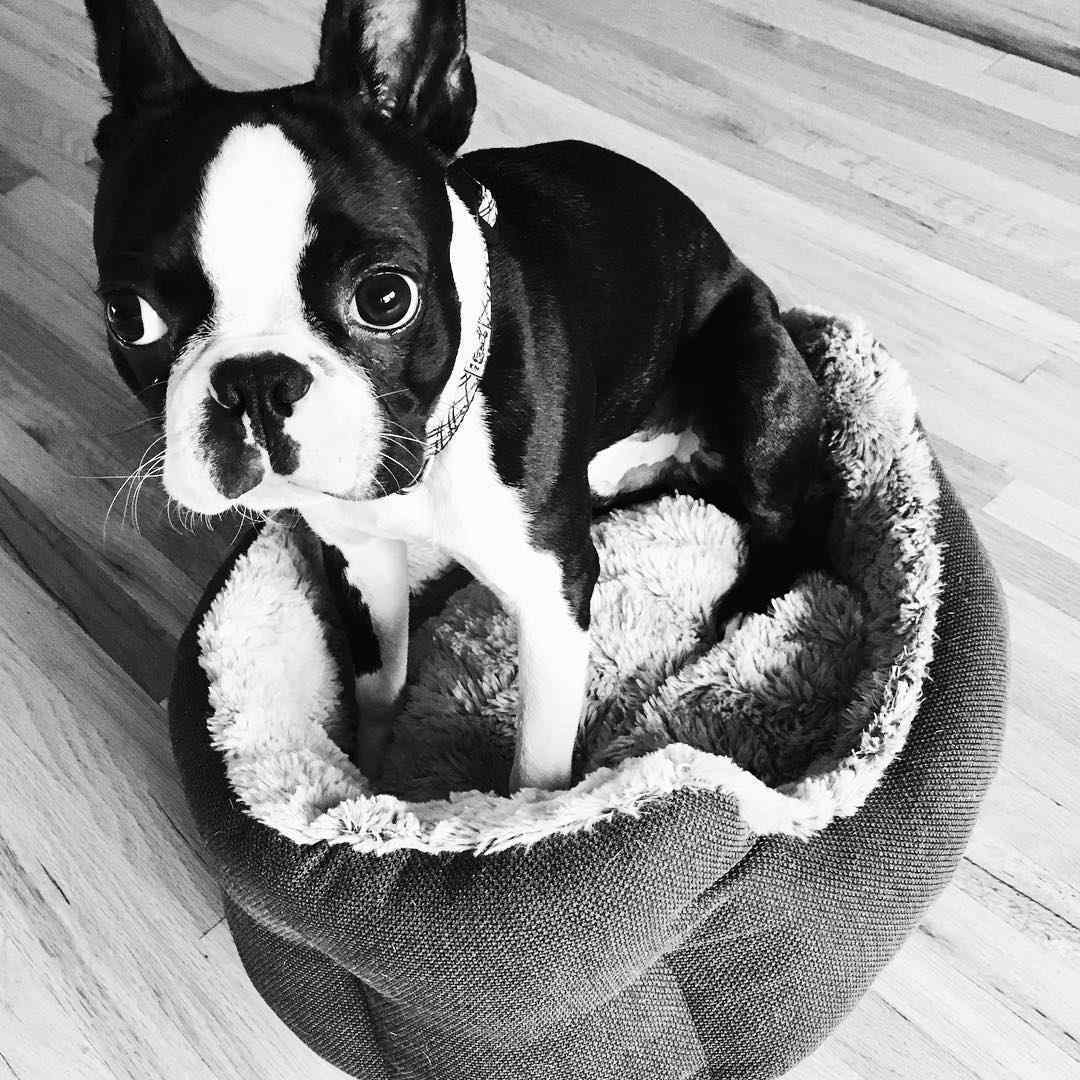
Source: princecharlie5/Instragram
Boston Terriers are a bit bigger than Pugs but have the same flat, wrinkled faces and beady eyes. One big difference with the Boston Terrier is that their ears stand erect instead of being folded down against their head, like a pug.
The Boston Terrier is a sturdy, compact dog and have a gentle and affectionate personality. They have distinctive coat markings that are white and either black, brindle, or black with red undertones. If these guys get plenty of exercise, they can thrive in just about any setting including in apartments and families with kids or other dogs.
The lifespan of a Boston Terrier ranges from 13 to 15 years. They are easy to groom and train, with good overall health. This breed does tend to wander though, so keeping them close is key!
- Pros: easy to train, good with cats, makes a good family dog, great with kids, couch potato, very playful and energetic, mostly healthy with a long lifespan, independent.
- Cons: fond of the sound of their own voice.
Boxer
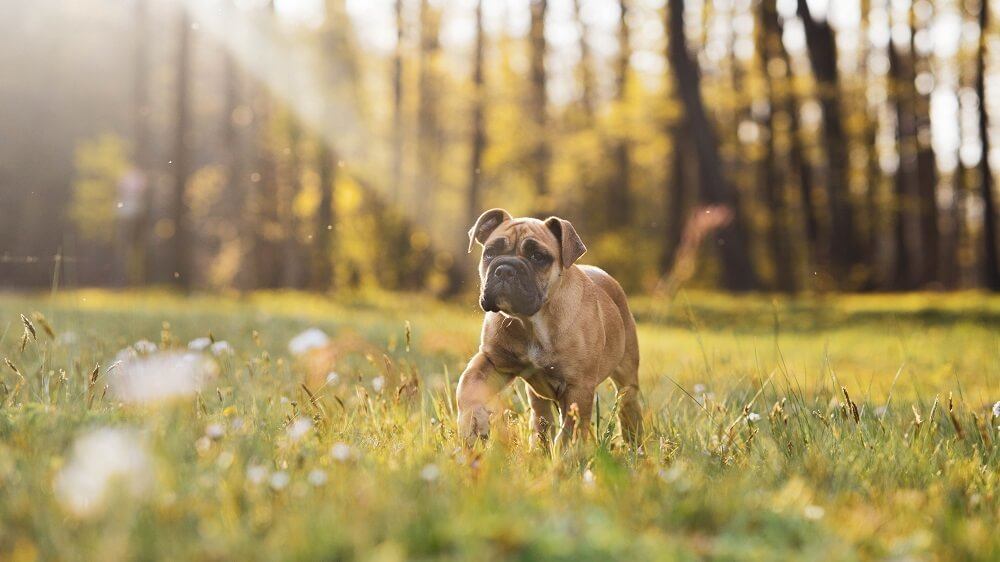
Boxers are another popular brachycephalic dog breed. These pups are smart, active, and fun. Perfect for families who want a dog that look like a pug but prefer bigger breeds, boxers weigh up to 80 pounds and measure up to 25 inches at the shoulder.
This breed is muscular with short hair and pointed ears. Their coat is easy to groom and maintain, but they do shed a fair bit. Boxers tend to dote on children and are good dogs for active families committed to training them using positive reinforcement.
A boxer lives about 10 to 12 years. Since they were originally bred as medium sized guard dogs, it’s important that their energy levels are met with plenty of play and vigorous exercise.
- Pros: low-maintenance, very active, gentle companion to children, not loud barkers, great for families.
- Cons: non-stop energy machine, quite fond of feline-chasing (corrected with early socialization), quite stubborn when it comes to training.
Brussels Griffon
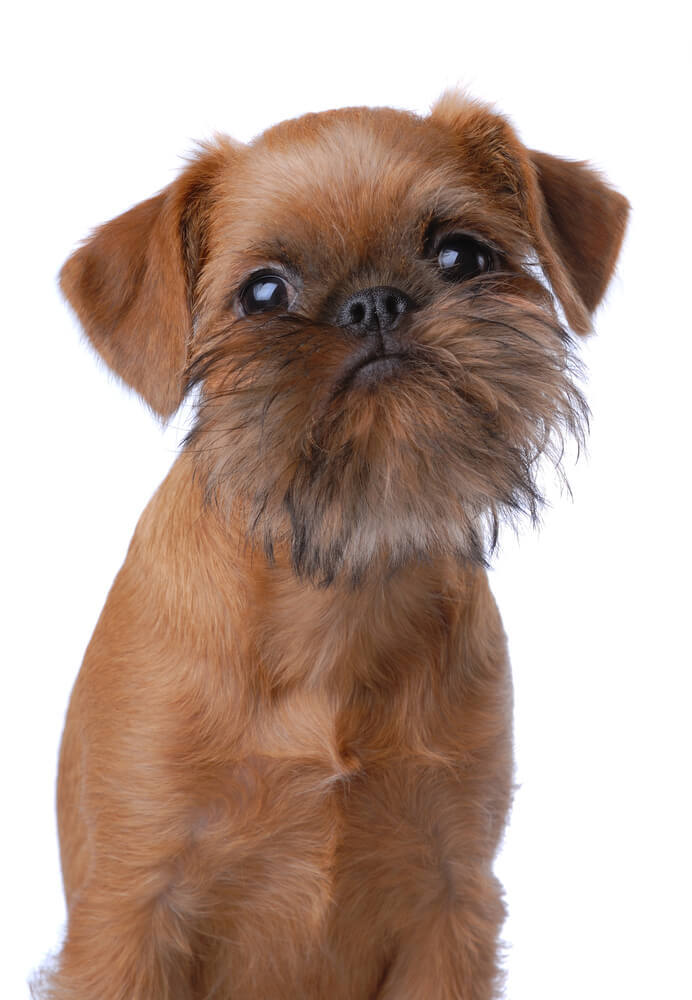
Brussels Griffon (Griffs) is a hypoallergenic dog breed with a unique appearance that has some similarities to pugs. For example, they have a similar squished-looking nose, and dark, wide-set eyes.
Weighing only 8 to 10 pounds, this breed is smaller than your average pug and they have more hair, especially around their snout and on their legs. This toy breed was originally designed to hunt and kill rats in Belgium, France. Today, they make great companions for active families or if you or a family member are allergic to dogs.
Griffs can adapt to apartment living but they do have a bark that needs to be reigned in. This breed is known for it’s self-importance and is a little tricky to train so might not be the best option for first-time owners.
- Pros: easily trainable, very sociable and playful, requires regular grooming, highly intelligent dog, low shedding, quite receptive to training.
- Cons: can get a little clingy, don't do well left alone, not be suitable for families with small children, housebreaking can be challenging.
Dogue de Bordeaux
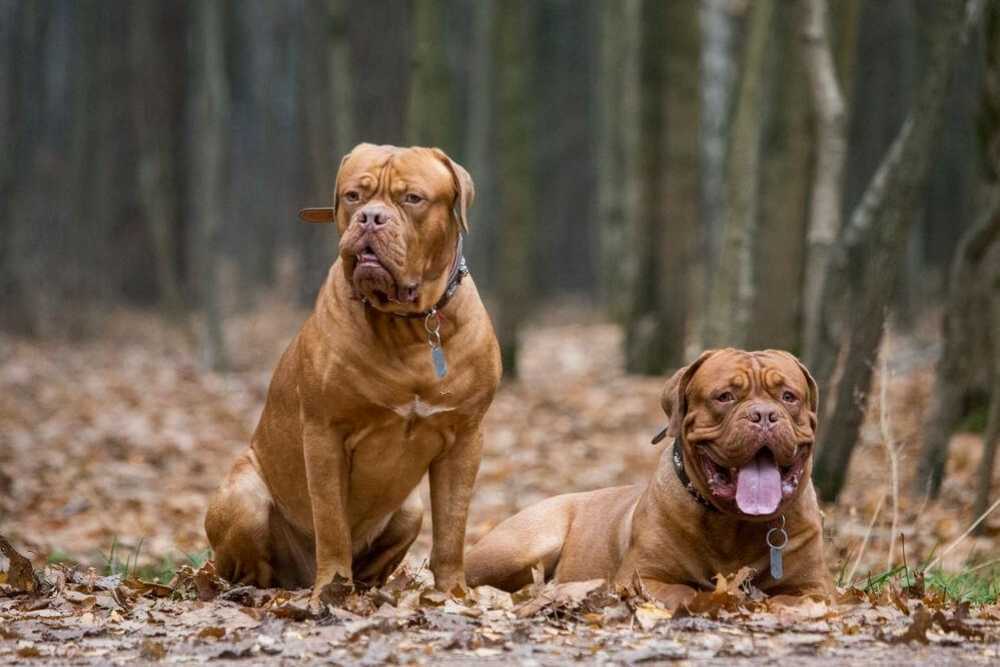
One lesser-known dog breed that somewhat resembles the Pug is the larger Dogue de Bordeaux. If you love the Pug’s wrinkled face but prefer a larger breed, perhaps a working pup, this one’s for you.
The Dogue De Bordeaux (a.k.a. Mastiff of Bordeaux, French Mastiff or DDB) can weigh over 110 pounds and measures as tall as 26 inches at the shoulder. These dogs have a shorter lifespan of only 6 to 8 years, but in that time, they prove themselves to be loyal companions.
Originally used as guard dogs in ancient France, these pups will keep away unwanted strangers but make affectionate family pets. Because they can be wary of other dogs and strangers, and are stubborn when it comes to training, the DDB is best suited for experienced dog owners.
- Pros: affectionate and even-tempered, loyal and protective, not noisy barkers, gentle with kids, daily walks suffice given its large size, easy to train but very stubborn.
- Cons: prone to food allergies (especially wheat), they do slobber, does not get along well with other pets in the house, particularly other dogs, moderate shedders, prone to dog bloat.
Bullmastiff
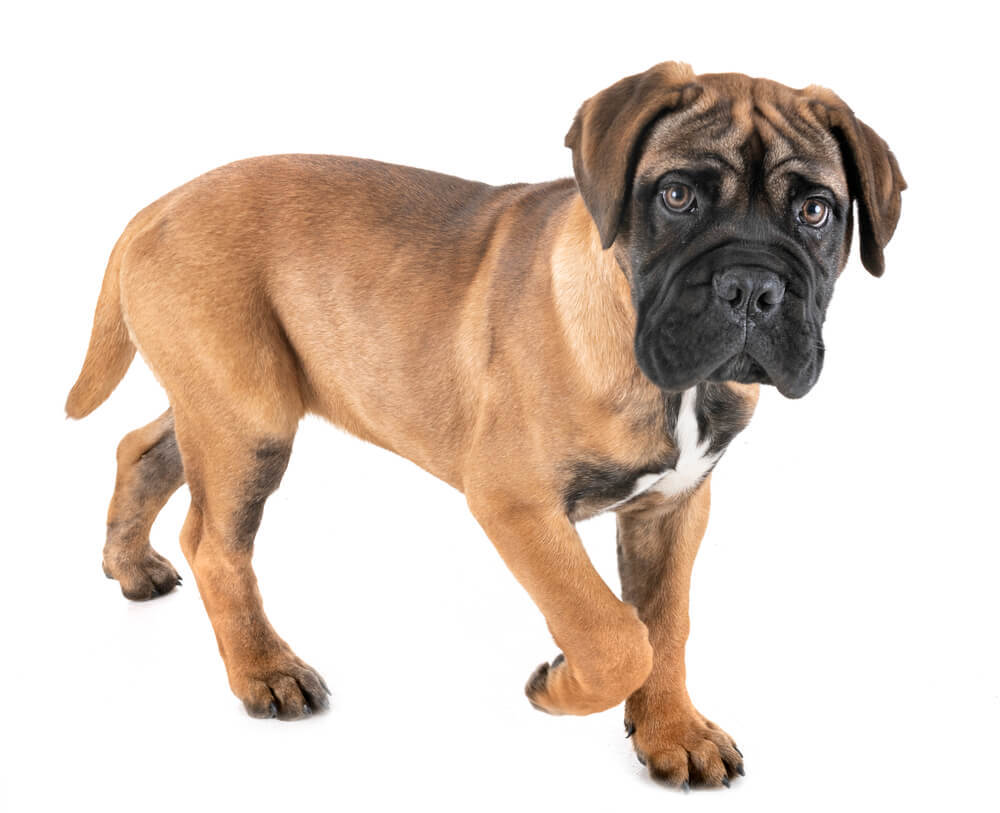
The Bullmastiff is another big dog that closely resembles a Pug in a few ways, including the shape/placement of its ears, coloring, and facial creases. They’re much larger in size though, weighing up to 130 pounds and standing as tall as 27 inches at the shoulder.
Bullmastiffs are a working breed that lives approximately 7 to 9 years. Known as the “silent watchdog”, Bullmastiffs courageously protect their families, who they bond closely with. These big pups are the perfect mix of mellow and playful. They can even make good apartment dogs!
One thing to watch out for when it comes to this breed is their drooling. If you can put up with a little slobber, a well-trained and socialized Bullmastiff makes a great pet and guardian.
- Pros: excellent watchdogs, daily walks suffice as exercise, low amount of shedding, highly trainable, medium energy levels, very affectionate and a friendly demenour, does well when left alone, great as a family pet.
- Cons: potentially aggressive toward other animals (dogs and cats) and people, short lifespan, vulnerable to overheating.
Chinese Shar-Pei

The Chinese Shar-Pei is a somewhat more uncommon dog to see in most places, but they are majestic. This big dog has pug-like wrinkles on its face, forehead, and body. Their ears are tucked down like pugs’ and they have expressive, wide-set eyes.
Chinese Shar-Peis are a medium sized breed weighing up to 60 pounds and measuring up to 20 inches tall at the shoulder. Their name means “sand skin” after the rough coat and loose skin they are known for.
These dogs were originally bred as working dogs for guarding, hunting, and herding. Because of their natural stubbornness and wariness of strangers and other dogs, they require an experienced dog owner. Early socialization and firm training are key to a well-adjusted Chinese Shar-Pei.
- Pros: very independent, does well when left alone, very intelligent, fiercely loyal and protective, not a needy dog - quite aloof, minimum grooming, low-energy breed so great for apartment living.
- Cons: not a breed for novice owners, prone to skin infections, high prey drive so not tolerant of other pets, low tolerance of heat.
French Bulldog
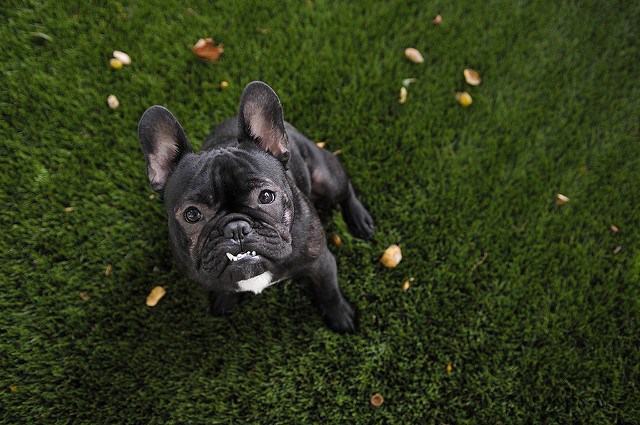
Image Credit: Hallahmoon
The French Bulldog bears a striking resemblance to the Pug and is comparable in size. Weighing up to 28 pounds and only about 13 inches tall at the shoulder, this breed also has a squished face and some of the wrinkles Pugs are known for. They also have similar dark, wide-set eyes.
French Bulldogs are popular, ranking at number 4 of 196 breeds on the AKC website. Where they set themselves apart from Pugs is their trademark batlike ears that stand up and out, accentuating their cute faces.
“Frenchies” are great little dogs that can adapt to apartment and city life, but also thrive in wide-open rural places. This breed is a good choice for first time dog owners because of their low-maintenance coats and all-around friendly nature.
- Pros: low-maintenance, average shedders, fun and energetic, good around children, don't bark much, good family dog, can be good with cats (when socialized early).
- Cons: not built to swim due to their large heads and short legs, can be quite stubborn, have a short attention span so training is a little challenging.
Japanese Chin
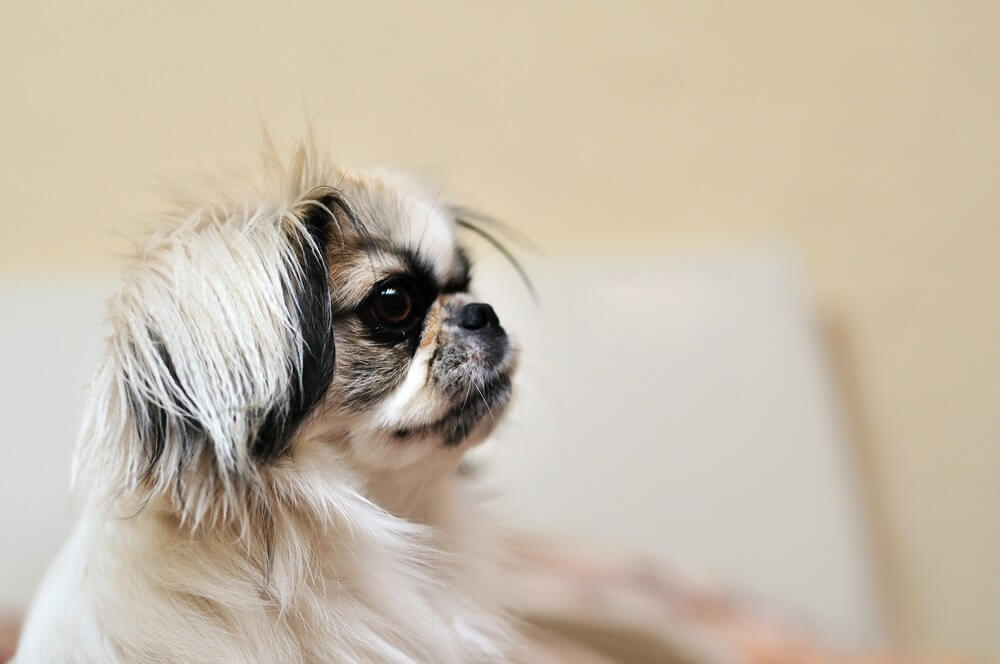
If you love pugs but you prefer dogs with more hair to pet and brush, you might be a fan of the Japanese Chin. These dogs are noble and petite, with a squished-up snout, dark eyes, long ears, and big bushy tails. They’re tiny too; only 8 to 11 inches tall and weighing up to 11 pounds.
These dogs have made loyal companions in Japan and other parts of Asia for over 1,000 years. They enjoy spending time with their people and are easy dogs for new owners and apartment dwellers to handle.
One interesting thing about this breed is that they are described as cat-like. They’re quiet and talented at climbing and jumping over things.
- Pros: not a high-maintenance breed, highly affectionate and friendly, does well with other pets, great for apartment living given their size and low exercise requirements.
- Cons: stubborn so can be harder to train, being flat-faced like all breeds on this list - a very low tolerance to heat, prone to obesity.
Pekingese
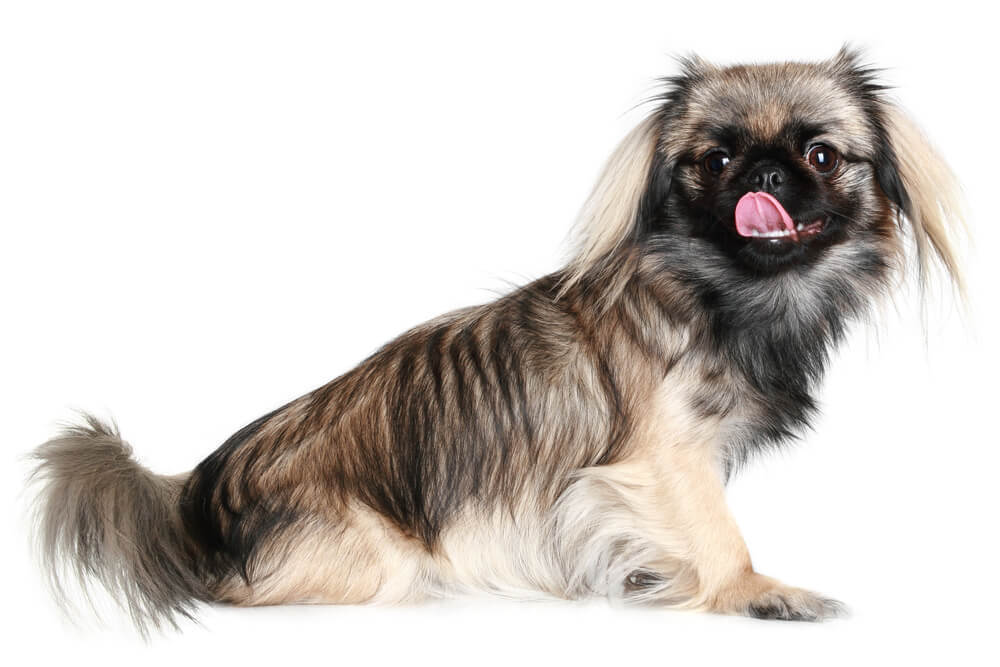
The Pekingese is another dog you don’t see too often. They resemble a Pug in the face, eyes, and coloring, but with long hair covering their ears and body. This breed is a little smaller, measuring about 6 to 9 inches tall and weighing up to 14 pounds.
Pekingese were bred to be companions to the imperial family of China for centuries. They are a dignified breed that bonds closest with one adult caregiver. Since they are on the smaller side, these pups aren’t recommended for families with small children or for allergy sufferers.
These dogs are smart and loving but they can be barkers, shed a lot, and require consistent grooming. Aside from that they’re low energy dogs who enjoy lounging on your lap and adapt well to apartment living.
- Pros: highly loyal, confident, very independent, very intelligent, great for apartment living, good watchdogs, good with kids, modest exercise requirements.
- Cons: prone to obesity, high-maintenance needs, as a short-faced breed they do better in cooler climates, training can be challenging, non-hypoallergenic.
Also Read: Are Pugs Hypoallergenic?

